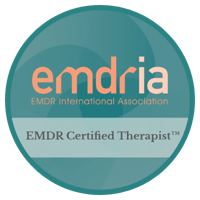Attachment issues are not random—they are deeply connected to our earliest relationships and how our emotional needs were (or weren’t) met. When children grow up without consistent love, security, or emotional support, they may develop internal beliefs that they are unworthy, unsafe, or unlovable. These beliefs form the roots of attachment issues that can follow us into adult relationships, often showing up as anxiety, avoidance, or fear of closeness.
Understanding the root causes of attachment issues is the first step toward healing. Let’s explore where these patterns come from and how EMDR therapy can help restore healthy, secure connections.
Root Causes of Attachment Issues
Attachment theory, developed by John Bowlby and Mary Ainsworth, suggests that the bond formed between a child and caregiver sets the stage for all future relationships. When that bond is secure, children feel confident, loved, and emotionally grounded. But when it is unstable or damaged, attachment trauma can develop. Here are the four most common types of attachment trauma and their root causes::
1. Neglect or Emotional Distance from Caregivers
Children rely on caregivers not only for physical care but also for emotional attunement. When caregivers are emotionally unavailable, disengaged, or consistently dismissive, children learn to suppress their needs to avoid disappointment. This can result in avoidant attachment, where the individual grows up to minimize emotions and resist vulnerability—even in close relationships.
2. Inconsistent Parenting – Alternating Between Love and Rejection
Unpredictable caregiving, where a parent is warm and loving one moment and cold or rejecting the next, leaves a child confused and anxious. This inconsistency fosters hypervigilance and a need for constant reassurance. In adulthood, this may manifest as anxious attachment—marked by clinginess, fear of abandonment, and difficulty trusting that others will stay.
3. Abandonment or Sudden Loss of a Parent
The sudden absence of a caregiver through death, divorce, incarceration, or emotional withdrawal can be profoundly traumatic. When a parent disappears without warning, the child’s sense of safety is shattered. Later in life, the individual may carry deep fears of loss, emotional instability, or difficulty forming trusting bonds—hallmarks of disorganized attachment.
4. Growing Up in an Unpredictable or Chaotic Environment
Homes characterized by chaos—such as exposure to domestic violence, substance abuse, mental illness, or frequent relocations—can leave a child in a constant state of emotional survival. Rather than building trust, these children learn to anticipate threat and stay guarded. This can lead to attachment patterns defined by emotional reactivity, difficulty regulating emotions, and problems with intimacy and trust.

How EMDR Can Address Root Attachment Wounds
Eye Movement Desensitization and Reprocessing (EMDR) is an evidence-based therapy designed to help individuals heal from trauma—including the subtle, cumulative traumas of attachment injuries. EMDR targets the underlying memory networks associated with early attachment wounds and helps the brain form healthier, more adaptive beliefs about self and others.
Targets Past Experiences That Created Negative Self-Beliefs
EMDR helps clients reprocess early memories where they may have felt unwanted, ignored, or unsafe. These memories often fuel limiting beliefs like “I’m unlovable” or “People always leave.” EMDR transforms these beliefs into healthier ones, such as “I am worthy of love and connection.”
Retrains the Brain to Feel Safe in Relationships
Through bilateral stimulation (such as eye movements or tapping), EMDR helps desensitize emotional triggers. Clients become less reactive and more capable of staying grounded and open in relationships, even when stress arises.
Develops Confidence in Emotional Connections
As old attachment wounds heal, clients often experience increased confidence, healthier boundaries, and a stronger sense of self. Learn more about how to become securely attached. They begin to engage in relationships not from fear or desperation, but from a place of emotional security and mutual respect.
Healing attachment trauma isn’t about blaming caregivers or reliving painful moments. It’s about understanding your story, reclaiming your emotional truth, and learning that you are worthy of secure, supportive connections.
Are attachment wounds still shaping your relationships today? You don’t have to carry that burden alone.
I provide EMDR therapy to help individuals heal from attachment trauma and reconnect with themselves and others from a place of strength and safety.
🙋🏾♀️ Elnita Ottey is an EMDRIA-certified EMDR therapist offering both in-person and virtual sessions.
📍 In-person therapy is available in Monroe, NC, and the Charlotte Metro area.
🌐 Virtual sessions offered in NC, SC, TN, OK, CO, OR, and VT.
➡️ Learn more at www.elnitaottey.com or find a certified EMDR therapist at www.emdria.org.








